Botswana
From Wikipedia, the free encyclopedia
| Republic of Botswana
Lefatshe la Botswana (Tswana)
| ||||||
|---|---|---|---|---|---|---|
| ||||||
| Motto: "Pula" (Tswana) "Rain" | ||||||
| Anthem: Fatshe leno la rona (Tswana) This Land of Ours | ||||||
|
Location of Botswana (dark blue)
| ||||||
| Capital and largest city | Gaborone 24°39.5′S 25°54.5′E | |||||
| Official languages | ||||||
| Ethnic groups | ||||||
| Religion | Christianity | |||||
| Demonym |
| |||||
| Government | Parliamentary republic | |||||
| • | President | Ian Khama | ||||
| • | Vice-President | Mokgweetsi Masisi | ||||
| Legislature | National Assembly | |||||
| Independence from the United Kingdom | ||||||
| • | Established (Constitution) | 30 September 1966 | ||||
| Area | ||||||
| • | Total | 581,730 km2 (48th) 224,610 sq mi | ||||
| • | Water (%) | 2.6 | ||||
| Population | ||||||
| • | 2014 estimate | 2,155,784[1] (145th) | ||||
| • | 2011 census | 2,038,228 [2] | ||||
| • | Density | 3.4/km2 (231st) 8.9/sq mi | ||||
| GDP (PPP) | 2015 estimate | |||||
| • | Total | $40.551 billion[3] | ||||
| • | Per capita | $18,825[3] | ||||
| GDP (nominal) | 2015 estimate | |||||
| • | Total | $17.222 billion[3] | ||||
| • | Per capita | $7,995[3] | ||||
| Gini (2013) | 60.5[4] very high | |||||
| HDI (2014) | medium · 106th | |||||
| Currency | Pula (BWP) | |||||
| Time zone | Central Africa Time(UTC+2) | |||||
| • | Summer (DST) | not observed (UTC) | ||||
| Drives on the | left | |||||
| Calling code | +267 | |||||
| ISO 3166 code | BW | |||||
| Internet TLD | .bw | |||||
| Website www | ||||||
Botswana /bɒtˈswɑːnə/, officially the Republic of Botswana (Tswana: Lefatshe la Botswana), is a landlocked country located in Southern Africa. The citizens refer to themselves as Batswana (singular: Motswana).[6] Formerly the British protectorate of Bechuanaland, Botswana adopted its new name after becoming independent within the Commonwealth on 30 September 1966.[7] Since then, it has maintained a strong tradition of stable representative democracy, with a consistent record of uninterrupted democratic elections.
Botswana is topographically flat, with up to 70 percent of its territory being the Kalahari Desert. It is bordered by South Africa to the south and southeast, Namibia to the west and north, and Zimbabwe to the northeast. Its border with Zambia to the north near Kazungula is poorly defined but at most is a few hundred metres long.[8]
A mid-sized country of just over 2 million people, Botswana is one of the most sparsely populated nations in the world. Around 10 percent of the population lives in the capital and largest city, Gaborone. Formerly one of the poorest countries in the world—with a GDP per capita of about US$70 per year in the late 1960s—Botswana has since transformed itself into one of the fastest-growing economies in the world, now boasting a GDP (purchasing power parity) per capita of about $18,825 per year as of 2015, which is one of the highest in Africa.[1] Its high gross national income (by some estimates the fourth-largest in Africa) gives the country a modest standard of living and the highest Human Development Index of continental Sub-Saharan Africa.[9]
Botswana is a member of the African Union, the Southern African Development Community, the Commonwealth of Nations, and the United Nations. Despite its political stability and relative socioeconomic prosperity, the country is among the hardest hit by the HIV/AIDS epidemic, with around a quarter of the population estimated to be infected.[10]
Contents
[hide]History[edit]
Main article: History of Botswana
In the 19th century, hostilities broke out between Tswana inhabitants of Botswana and Ndebele tribes who were making incursions into the territory from the north-east. Tensions also escalated with the Dutch Boer settlers from the Transvaal to the east. After appeals by the Batswana leaders Khama III, Bathoen and Sebele for assistance, the British Government put Bechuanaland under its protection on 31 March 1885.[11] The northern territory remained under direct administration as the Bechuanaland Protectorateand is modern-day Botswana, while the southern territory became part of the Cape Colony and is now part of the northwest province of South Africa. The majority of Setswana-speaking people today live in South Africa.
When the Union of South Africa was formed in 1910 out of the main British colonies in the region, the Bechuanaland Protectorate,Basutoland (now Lesotho) and Swaziland (the High Commission Territories) were not included, but provision was made for their later incorporation. However, their inhabitants began to be consulted by the UK, and although successive South African governments sought to have the territories transferred, the UK kept delaying; consequently, it never occurred. The election of theNationalist government in 1948, which instituted apartheid, and South Africa's withdrawal from the Commonwealth in 1961, ended any prospect of incorporation of the territories into South Africa. An expansion of British central authority and the evolution of tribal government resulted in the 1920 establishment of two advisory councils to represent both Africans and Europeans. Proclamations in 1934 regulated tribal rule and powers. A European-African advisory council was formed in 1951, and the 1961 constitution established a consultative legislative council.
In June 1964, the UK accepted proposals for a democratic self-government in Botswana. The seat of government was moved in 1965 from Mafikeng in South Africa, to the newly established Gaborone, which sits near its border. The 1965 constitution led to the first general elections and to independence on 30 September 1966. Seretse Khama, a leader in the independence movement and the legitimate claimant to the Ngwato chiefship, was elected as the first President, going on to be re-elected twice.
The presidency passed to the sitting Vice-President, Quett Masire, who was elected in his own right in 1984 and re-elected in 1989 and 1994. Masire retired from office in 1998, and was succeeded by Festus Mogae, who was elected in his own right in 1999 and re-elected in 2004. The presidency passed in 2008 to Ian Khama (son of the first President), who had been serving as Mogae's Vice-President since resigning his position in 1998 as Commander of theBotswana Defence Force to take up this civilian role.
A long-running dispute over the northern border with Namibia's Caprivi Strip was the subject of a ruling by the International Court of Justice in December 1999, which ruled that Kasikili Island belongs to Botswana.[12]
Geography[edit]
Main articles: Geography of Botswana and Climate of Botswana
At 581,730 km2 (224,607 sq mi) Botswana is the world's 48th-largest country. It is similar in size to Madagascar or France. It lies between latitudes 17° and 27°S, and longitudes 20° and 30°E.
The country is predominantly flat, tending toward gently rolling tableland. Botswana is dominated by the Kalahari Desert, which covers up to 70% of its land surface. TheOkavango Delta, one of the world's largest inland deltas, is in the northwest. The Makgadikgadi Pan, a large salt pan, lies in the north.
The Limpopo River Basin, the major landform of all of southern Africa, lies partly in Botswana, with the basins of its tributaries, the Notwane, Bonwapitse, Mahalapswe,Lotsane, Motloutse and the Shashe, located in the eastern part of the country. The Notwane provides water to the capital through the Gaborone Dam. The Chobe River lies to the north, providing a boundary between Botswana and Namibia's Zambezi Region. The Chobe River meets with the Zambezi River at a place called Kazungula (meaning a small sausage tree, a point where Sebitwane and his Makololo tribe crossed the Zambezi into Zambia).
Ecology[edit]
Botswana has diverse areas of wildlife habitat. In addition to the delta and desert areas, there are grasslands and savannas, where blue wildebeest, antelopes, and other mammals and birds are found. Northern Botswana has one of the few remaining large populations of the endangered African wild dog. Chobe National Park, found in theChobe District, has the world's largest concentration of African elephants. The park covers about 11,000 km2 (4,247 sq mi) and supports about 350 species of birds.
The Chobe National Park and Moremi Game Reserve (in the Okavango Delta) are major tourist destinations. Other reserves include the Central Kalahari Game Reservelocated in the Kalahari desert in Ghanzi District; Makgadikgadi Pans National Park and Nxai Pan National Park are in Central District in the Makgadikgadi Pan. Mashatu Game Reserve is privately owned: located where the Shashe River and Limpopo River meet in eastern Botswana. The other privately owned reserve is Mokolodi Nature Reservenear Gaborone. There are also specialised sanctuaries like the Khama Rhino Sanctuary (for rhinoceros) and Makgadikgadi Sanctuary (for flamingos). They are both located in Central District.
Environmental problems[edit]
Botswana faces two major environmental problems: drought and desertification. The desertification problems predominantly stem from the severe times of drought in the country. Three quarters of the country's human and animal populations depend on groundwater due to drought. Groundwater use through deep borehole drilling has somewhat eased the effects of drought. Surface water is scarce in Botswana and less than 5% of the agriculture in the country is sustainable by rainfall. In the remaining 95% of the country, raising livestock is the primary source of rural income. Approximately 71% of the country's land is used for communal grazing, which has been a major cause of the desertification and the accelerating soil erosion of the country.[13]
Since raising livestock has proven to be profitable for the people of Botswana, the land continues to be exploited. The animal populations have continued to dramatically increase. From 1966 to 1991 the livestock population has increased from 1.7 million to 5.5 million.[13]:64 Similarly, the human population has increased from 574,000 in 1971 to 1.5 million in 1995, nearly a 200% increase. "Over 50% of all households in Botswana own cattle, which is currently the largest single source of rural income." "Rangeland degradation or desertification is regarded as the reduction in land productivity as a result of overstocking and overgrazing or as a result of veld product gathering for commercial use. Degradation is exacerbated by the effects of drought and climate change."[13] Environmentalists report that the Okavango Delta is drying up due to the increased grazing of livestock.[14] The Okavango Delta is one of the major semi-forested wetlands in Botswana and one of the largest inland deltas in the world; it is a crucial ecosystem to the survival of many animals.[14]
The Department of Forestry and Range Resources has already begun to implement a project to reintroduce indigenous vegetation into communities in Kgalagadi South, Kweneng North and Boteti.[15] Reintroduction of indigenous vegetation will help with the degradation of the land. The United States Government has also entered into an agreement with Botswana, giving them $7 million US dollars to reduce Botswana's debt by $8.3 million US dollars. The stipulation of the US reducing Botswana's debt is that Botswana will focus on more extensive conservation of the land.[14]
The United Nations Development Programme claims that poverty is a major problem behind the overexploitation of resources, including land, in Botswana. To help change this the UNDP joined in with a project started in the southern community of Struizendam in Botswana. The purpose of the project is to draw from "indigenous knowledge and traditional land management systems". The leaders of this movement are supposed to be the people in the community, to draw them in, in turn increasing their possibilities to earn an income and thus decreasing poverty. The UNDP also stated that the government has to effectively implement policies to allow people to manage their own local resources and are giving the government information to help with policy development[16]
Politics and government[edit]
Main articles: Politics of Botswana and Human rights in Botswana
See also: Foreign relations of Botswana
The Constitution of Botswana is the rule of law which protects the citizens of Botswana and represents their rights. The politics of Botswana take place in a framework of arepresentative democratic republic, whereby the President of Botswana is both head of state and head of government, and of a multi-party system. Executive power is exercised by the government. Legislative power is vested in both the government and the Parliament of Botswana. The most recent election, its eleventh, was held on 24 October 2014.
Since independence was declared, the party system has been dominated by the Botswana Democratic Party. The judiciary is independent of the executive and the legislature.[17] Botswana ranks 30th out of 167 states in the 2012 Democracy Index.[18] According to Transparency International, Botswana is the least corrupt country in Africa and ranks close to Portugal and South Korea.[19]
Foreign relations and military[edit]
Main article: Botswana Defence Force
At the time of independence, Botswana had no armed forces. It was only after the Rhodesian and South African militaries struck respectively against the Zimbabwe People's Revolutionary Army and Umkhonto we Sizwe[20] bases that the Botswana Defence Force (BDF) was formed in 1977.[citation needed] The President is commander-in-chief of the armed forces and appoints a defence council. The BDF has approximately 12,000 members.
Following political changes in South Africa and the region, the BDF's missions have increasingly focused on prevention of poaching, preparing for disasters, and foreignpeacekeeping. The United States has been the largest single foreign contributor to the development of the BDF, and a large segment of its officer corps have received U.S. training. It is considered an apolitical and professional institution.[citation needed]
The Botswana government gave the United States permission to explore the possibility of establishing an Africa Command (AFRICOM) base in the country.
Administrative divisions[edit]
Main articles: Districts of Botswana and Sub-districts of Botswana
Botswana is divided into nine districts.
Botswana is further divided into 15 councils which includes the 9 districts councils from the 9 districts plus some councils from urban or town councils being:
|
Economy[edit]
Main article: Economy of Botswana
Since independence, Botswana has had one of the fastest growth rates in per capita income in the world.[21] Botswana has transformed itself from one of the poorest countries in the world to a middle-income country. By one estimate, it has the fourth highest gross national income at purchasing power parity in Africa, giving it a standard of living around that of Mexico and Turkey.[22]
The Ministry of Trade and Industry of Botswana is responsible for promoting business development throughout the country. According to the International Monetary Fund, economic growth averaged over 9% per year from 1966 to 1999. Botswana has a high level of economic freedom compared to other African countries.[23] The government has maintained a sound fiscal policy, despite consecutive budget deficits in 2002 and 2003, and a negligible level of foreign debt. It earned the highest sovereign credit rating in Africa and has stockpiled foreign exchange reserves (over $7 billion in 2005/2006) amounting to almost two and a half years of current imports.
An array of financial institutions populates the country's financial system, with pension funds and commercial banks being the two most important segments by asset size. Banks remain profitable, well-capitalised, and liquid, as a result of growing national resources and high interest rates.[24] The Bank of Botswana serves as a central bank. The country's currency is the Botswana pula.
Botswana's competitive banking system is one of Africa's most advanced.[clarification needed] Generally adhering to global standards in the transparency of financial policies and banking supervision, the financial sector provides ample access to credit for entrepreneurs.[citation needed] The Capital Bank opened in 2008.[25] As of August 2015, there are a dozen licensed banks in the country.[26] The government is involved in banking through state-owned financial institutions and a special financial incentives program that is aimed at increasing Botswana's status as a financial centre.[citation needed] Credit is allocated on market terms, although the government provides subsidised loans.[citation needed]Reform of non-bank financial institutions has continued in recent years, notably through the establishment of a single financial regulatory agency that provides more effective supervision.[citation needed] The government has abolished exchange controls, and with the resulting creation of new portfolio investment options, the Botswana Stock Exchange is growing.[27]
The constitution provides for an independent judiciary, and the government respects this in practice. The legal system is sufficient to conduct secure commercial dealings, although a serious and growing backlog of cases prevents timely trials. The protection of intellectual property rights has improved significantly. Botswana is ranked second only to South Africa among sub-Saharan Africa countries in the 2014 International Property Rights Index.[28]
While generally open to foreign participation in its economy, Botswana reserves some sectors for citizens. Increased foreign investment plays a significant role in the privatisation of state-owned enterprises. Investment regulations are transparent, and bureaucratic procedures are streamlined and open, although somewhat slow. Investment returns such as profits and dividends, debt service, capital gains, returns on intellectual property, royalties, franchise's fees, and service fees can be repatriated without limits.
Botswana imports refined petroleum products and electricity from South Africa. There is some domestic production of electricity from coal.
Gemstones and precious metals[edit]
In Botswana, the Department of Mines and Ministry of Minerals, Energy and Water Resources, led by Hon Onkokame Kitso Mokaila in Gaborone, maintains data regarding mining throughout the country.Debswana, the largest diamond mining company operating in Botswana, is 50% owned by the government.[29] The mineral industry provides about 40% of all government revenues.[30] In 2007, significant quantities of uranium were discovered, and mining was projected to begin by 2010. Several international mining corporations have established regional headquarters in Botswana, and prospected for diamonds, gold, uranium, copper, and even oil, many coming back with positive results. Government announced in early 2009 that they would try to shift their economic dependence on diamonds, over serious concern that diamonds are predicted to dry out in Botswana over the next twenty years.
Botswana’s Orapa mine is the largest diamond mine in the world in terms of value and quantity of carats produced annually.[citation needed] Estimated to produce over 11 million carats in 2013, with an average price of $145/carat, the Orapa mine is estimated to produce over $1.6 billion worth of diamonds in 2013.[31]
Demographics[edit]
Main article: Demographics of Botswana
The Tswana are the majority ethnic group in Botswana, making up 79% of the population. The largest minority ethnic groups are the BaKalanga, and San or AbaThwa, also known as Basarwa. Other tribes are Bayei, Bambukushu, Basubia, Baherero and Bakgalagadi. In addition, there are small numbers of whites and Indians, both groups being roughly equally small in number. Botswana's Indian population is made up of many Indian-Africans of several generations, with some having migrated from Mozambique, Kenya, Tanzania, Mauritius, South Africa, and so on, as well as first generation Indian immigrants. The white population speaks English and Afrikaans and makes up roughly 3% of the population.
Since 2000, because of deteriorating economic conditions in Zimbabwe, the number of Zimbabweans in Botswana has risen into the tens of thousands.[32]
Fewer than 10,000 San people are still living their traditional hunter-gatherer style of life. Since the mid-1990s the central government of Botswana has been trying to move San out of their historic lands.[33] The UN's top official on indigenous rights, Prof. James Anaya, condemned Botswana's actions toward the San in a report released in February 2010.[34][35]
| Rank | Name | District | Pop. | Rank | Name | District | Pop. | ||
|---|---|---|---|---|---|---|---|---|---|
 Gaborone  Francistown | 1 | Gaborone | South-East | 227,333 | 11 | Palapye | Central | 36,211 | |
| 2 | Francistown | North-East | 100,079 | 12 | Tlokweng | South-East | 35,982 | ||
| 3 | Molepolole | Kweneng | 67,598 | 13 | Lobatse | South-East | 29,032 | ||
| 4 | Mogoditshane | Kweneng | 57,637 | 14 | Ramotswa | South-East | 27,760 | ||
| 5 | Maun | North-West | 55,784 | 15 | Letlhakane | Central | 20,841 | ||
| 6 | Selibe Phikwe | Central | 49,724 | 16 | Tonota | Central | 20,007 | ||
| 7 | Serowe | Central | 47,447 | 17 | Moshupa | Southern | 19,780 | ||
| 8 | Kanye | Southern | 45,196 | 18 | Thamaga | Kweneng | 19,365 | ||
| 9 | Mochudi | Kgatleng | 44,339 | 19 | Jwaneng | Southern | 18,063 | ||
| 10 | Mahalapye | Central | 41,316 | 20 | Bobonong | Central | 17,351 | ||
Language[edit]
Main articles: Languages of Botswana and Setswana
The official language of Botswana is English although Setswana is widely spoken across the country. In Setswana, prefixes are more important than they are in many other languages. These prefixes include Bo, which refers to the country, Ba, which refers to the people, Mo, which is one person, and Se which is the language. For example, the main ethnic group of Botswana is the Tswana people, hence the name Botswana for its country. The people as a whole are Batswana, one person is a Motswana, and the language they speak is Setswana.
Other languages spoken in Botswana include Kalanga (sekalanga), Sarwa (sesarwa), Ndebele, !Xóõ and, in some parts, Afrikaans.
Religion[edit]
Main article: Religion in Botswana
An estimated 70% of the country's citizens identify as Christians. Anglicans, Methodists, and the United Congregational Church of Southern Africa make up the majority of Christians. There are also congregations of Lutherans, Baptists, Roman Catholics, Latter-day Saints (Mormons), the Dutch Reformed Church, Mennonites, Seventh-day Adventists and Jehovah's Witnesses in the country. In Gaborone, a Lutheran History Centre is open to the public.
According to the 2001 census, the country has around 5,000 Muslims, mainly from South Asia, 3,000 Hindus and 700 Baha'is. Approximately 20% of citizens espouse no religion. Religious services are well attended in both rural and urban areas.[38]
Culture[edit]
Main article: Culture of Botswana
Besides referring to the language of the dominant people groups in Botswana, Setswana is the adjective used to describe the rich cultural traditions of the Batswana—whether construed as members of the Tswana ethnic groups or of all citizens of Botswana.
The Scottish writer Alexander McCall Smith has written several mystery novels (No. 1 Ladies' Detective Agency series) set in Botswana.
Music[edit]
Main article: Music of Botswana
Botswana music is mostly vocal and performed sometimes without drums depending on the occasion; it also makes heavy use of string instruments. Botswana folk music has instruments such as Setinkane (a Botswana version of miniature piano), Segankure/Segaba (a Botswana version of the Chinese instrument Erhu), Moropa (Meropa -plural) (a Botswana version of the many varieties of drums), phala (a Botswana version of a whistle used mostly during celebrations. It comes in variety of forms too). Botswana cultural musical instruments are not confined only to the strings or drums. the hands are used as musical instruments too, by either clapping them together or against phathisi (goat skin turned inside out wrapped around the calf area; it is only used by men) to create music and rhythm. For the last few decades, the guitar has been celebrated as a versatile music instrument for Tswana music as it offers a variety in string which the Segaba instrument does not have. It is the outsider that found a home within the culture. The highlight of any celebration or event that shows especially happiness is the dancing. This differs by regime, age, gender and status in the group or if it's a tribal activity, status in the community. The national anthem is Fatshe leno la rona. Written and composed by Kgalemang Tumediso Motsete, it was adopted upon independence in 1966.[citation needed]
Visual arts[edit]
Main article: Art of Botswana
In the northern part of Botswana, women in the villages of Etsha and Gumare are noted for their skill at crafting baskets from Botswana from Mokola Palm and local dyes. The baskets are generally woven into three types: large, lidded baskets used for storage, large, open baskets for carrying objects on the head or for winnowing threshed grain, and smaller plates for winnowing pounded grain. The artistry of these baskets is being steadily enhanced through colour use and improved designs as they are increasingly produced for commercial use.
Other notable artistic communities include Thamaga Pottery and Oodi Weavers, both located in the south-eastern part of Botswana.
The oldest paintings from both Botswana and South Africa depict hunting, animal and human figures, and were made by the Khoisan (!Kung San/Bushmen) over twenty thousand years ago within the Kalahari desert.
Food[edit]
Main article: Cuisine of Botswana
The cuisine of Botswana is unique but also shares some characteristics with other cuisine of Southern Africa. Examples of Botswana food are pap, boerewors, samp, vetkoekand mopani worms. A food unique to Botswana includes seswaa, heavily salted mashed-up meat.
Sports[edit]
Main article: Sport in Botswana
Football is the most popular sport in Botswana, with qualification for the 2012 Africa Cup of Nations being the biggest achievement to date. Other popular sports are cricket,tennis, rugby, badminton, softball, handball, golf, and track and field.[39][40]fam Botswana is an associate member of the International Cricket Council. Botswana became a member of The International Badminton Federation and Africa Badminton Federation in 1991. The Botswana Golf Union offers an amateur golf league in which golfers compete in tournaments and championships.
Botswana won its first Olympic medal in 2012 when Nijel Amos won silver in the 800 metres. In 2011 Amantle Montsho became world champion in the 400 metres and won Botswana's first athletics medal on the world level. High jumper Kabelo Kgosiemang has been three times African champion.
The card game bridge has a strong following; it was first played in Botswana over 30 years ago and grew in popularity during the 1980s. Many British expatriate school teachers informally taught the game in Botswana's secondary schools. The Botswana Bridge Federation (BBF) was founded in 1988 and continues to organise tournaments. Bridge has remained popular and the BBF has over 800 members.[41] In 2007, the BBF invited the English Bridge Union to host a week-long teaching program in May 2008.[42]
Education[edit]
Main article: Education in Botswana
Botswana has made great strides in educational development since independence in 1966. At that time there were very few graduates in the country and only a very small percentage of the population attended secondary school. Botswana increased its adult literacy rate from 69% in 1991 to 83% in 2008.[43]
With the discovery of diamonds and the increase in government revenue that this brought, there was a huge increase in educational provision in the country. All students were guaranteed ten years of basic education, leading to a Junior Certificate qualification. Approximately half of the school population attends a further two years of secondary schooling leading to the award of the Botswana General Certificate of Secondary Education (BGCSE). Secondary education in Botswana is neither free nor compulsory.
After leaving school, students can attend one of the seven technical colleges in the country, or take vocational training courses in teaching or nursing. The best students enter the University of Botswana, Botswana College of Agriculture, and the Botswana Accountancy College in Gaborone. Many other students end up in the numerous private tertiary education colleges around the country. Notable amongst these is Botho University, the country's first private university which offers undergraduate programmes in Accounting, Business and Computing. Another international university is the Limkokwing University of Creative Technology which offers various associate degrees in Creative Arts.[44] Other tertiary institutions include Ba Isago, ABM University College, New Era, Gaborone Institute of Professional Studies etc. Tremendous strides in providing quality education have been made by private education providers such that a large number of the best students in the country are now applying to them as well. A vast majority of these students are government sponsored. The nation's second international university, the Botswana International University of Science and Technology, was completed in Palapye in 2011.
The quantitative gains have not always been matched by qualitative ones. Primary schools in particular still lack resources, and the teachers are less well paid than their secondary school colleagues. The Botswana Ministry of Education[45] is working to establish libraries in primary schools in partnership with the African Library Project.[46] The Government of Botswana hopes that by investing a large part of national income in education, the country will become less dependent on diamonds for its economic survival, and less dependent on expatriates for its skilled workers.[47] Those objectives are in part pursued through policies in favour of vocational education, gathered within the NPVET (National Policy on Vocational Education and Training, aiming to "integrate the different types of vocational education and training into one comprehensive system".[47] Botswana invests 21% of its government spending in education.[43]
In January 2006, Botswana announced the reintroduction of school fees after two decades of free state education[48] though the government still provides full scholarships with living expenses to any Botswana citizen in university, either at the University of Botswana or if the student wishes to pursue an education in any field not offered locally, such as medicine, they are provided with a full scholarship to study abroad.
Health[edit]
Main article: Health in Botswana
The Ministry of Health in Botswana is responsible for overseeing the quality and distribution of healthcare throughout the country. Life expectancy at birth was 55 in 2009 according to the World Bank, having previously fallen from a peak of 64.1 in 1990 to a low of 49 in 2002.[49]
The Cancer Association of Botswana is a voluntary non-governmental organisation. The association is a member of the Union for International Cancer Control. The Association supplements existing services through provision of cancer prevention and health awareness programmes, facilitating access to health services for cancer patients and offering support and counseling to those affected.[50]
HIV/AIDS epidemic[edit]
Main article: HIV/AIDS in Botswana
Like elsewhere in Sub-Saharan Africa, the economic impact of AIDS is considerable. Economic development spending was cut by 10% in 2002–3 as a result of recurring budget deficits and rising expenditure on healthcare services. Botswana has been hit very hard by the AIDS pandemic; in 2006 it was estimated that life expectancy at birth had dropped from 65 to 35 years.[51] However, after Botswana's 2011 census current life expectancy is estimated at 54.06 years.[1]
The prevalence of HIV/AIDS in Botswana was estimated at 24% for adults in 2006,[52] giving Botswana the second highest infection rate in the world after nearby Swaziland.[53]In 2003, the government began a comprehensive program involving free or cheap generic anti-retroviral drugs as well as an information campaign designed to stop the spread of the virus. With a nationwide Prevention of Mother-to-Child Transmission program, Botswana has reduced HIV transmission from infected mothers to their children from about 40% to just 4%. Under the leadership of Festus Mogae, the Government of Botswana solicited outside help in fighting HIV/AIDS and received early support from the Bill and Melinda Gates Foundation, the Merck Foundation, and together formed the African Comprehensive HIV AIDS Partnership (ACHAP). Other early partners include theBotswana-Harvard AIDS Institute, of the Harvard School of Public Health and the Botswana-UPenn Partnership of the University of Pennsylvania. According to the 2011 UNAIDS Report, universal access to treatment – defined as 80% coverage or greater – has been achieved in Botswana.[54]
Potential reasons for Botswana's high HIV prevalence include concurrent sexual partnerships, transactional sex, cross-generational sex, and a significant number of people who travel outside of their local communities in pursuit of work. The polyamorous nature of many sexual relationships further impacts the health situation, to the extent that it has given rise to a Love Vocabulary[55] that is unique to the region.
Tourism[edit]
The Botswana Tourism Organisation is the country's official tourism group. Primarily, tourists visit Gaborone due to the city having numerous activities for visitors. Hotels include the Lonrho Lansmore Masa Square, a 5-Star hotel, and the Gaborone Sun, a luxury hotel that also features a casino. The Lion Park Resort is Botswana's first permanent amusement park and hosts events such as birthday parties for families. Other destinations in Botswana include the Gaborone Yacht Club and the Kalahari Fishing Club and natural attractions such as the Gaborone Dam and Mokolodi Nature Reserve. There are golf courses which are maintained by the Botswana Golf Union (BGU). The Phakalane Golf Estate is a multimillion-dollar clubhouse that offers both hotel accommodations and access to golf courses.
Museums in Botswana include;
- Botswana National Museum in Gaborone
- Kgosi Bathoen II (Segopotso) Museum in Kanye
- Kgosi Sechele I Museum in Molepolole
- Khama III Memorial Museum in Serowe
- Nhabe Museum in Maun
- Phuthadikobo Museum in Mochudi
- Supa Ngwano Museum Centre in Francistown


![Location of Botswana (dark blue)– in Africa (light blue & dark grey)– in the African Union (light blue) – [Legend]](https://upload.wikimedia.org/wikipedia/commons/thumb/a/a8/Location_Botswana_AU_Africa.svg/250px-Location_Botswana_AU_Africa.svg.png)

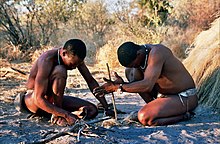

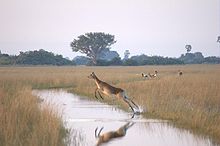
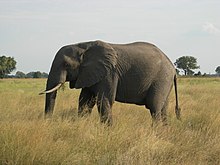






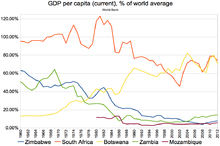



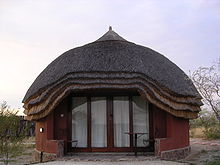

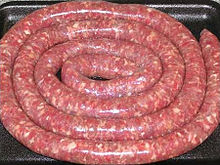
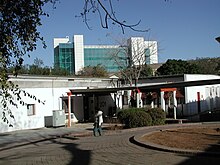
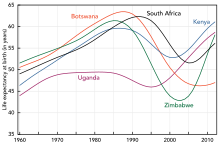


1 comment:
Hello Everybody,
My name is Mrs Sharon Sim. I live in Singapore and i am a happy woman today? and i told my self that any lender that rescue my family from our poor situation, i will refer any person that is looking for loan to him, he gave me happiness to me and my family, i was in need of a loan of S$250,000.00 to start my life all over as i am a single mother with 3 kids I met this honest and GOD fearing man loan lender that help me with a loan of S$250,000.00 SG. Dollar, he is a GOD fearing man, if you are in need of loan and you will pay back the loan please contact him tell him that is Mrs Sharon, that refer you to him. contact Dr Purva Pius,via email:(urgentloan22@gmail.com) Thank you.
BORROWERS APPLICATION DETAILS
1. Name Of Applicant in Full:……..
2. Telephone Numbers:……….
3. Address and Location:…….
4. Amount in request………..
5. Repayment Period:………..
6. Purpose Of Loan………….
7. country…………………
8. phone…………………..
9. occupation………………
10.age/sex…………………
11.Monthly Income…………..
12.Email……………..
Regards.
Managements
Email Kindly Contact: urgentloan22@gmail.com
Post a Comment